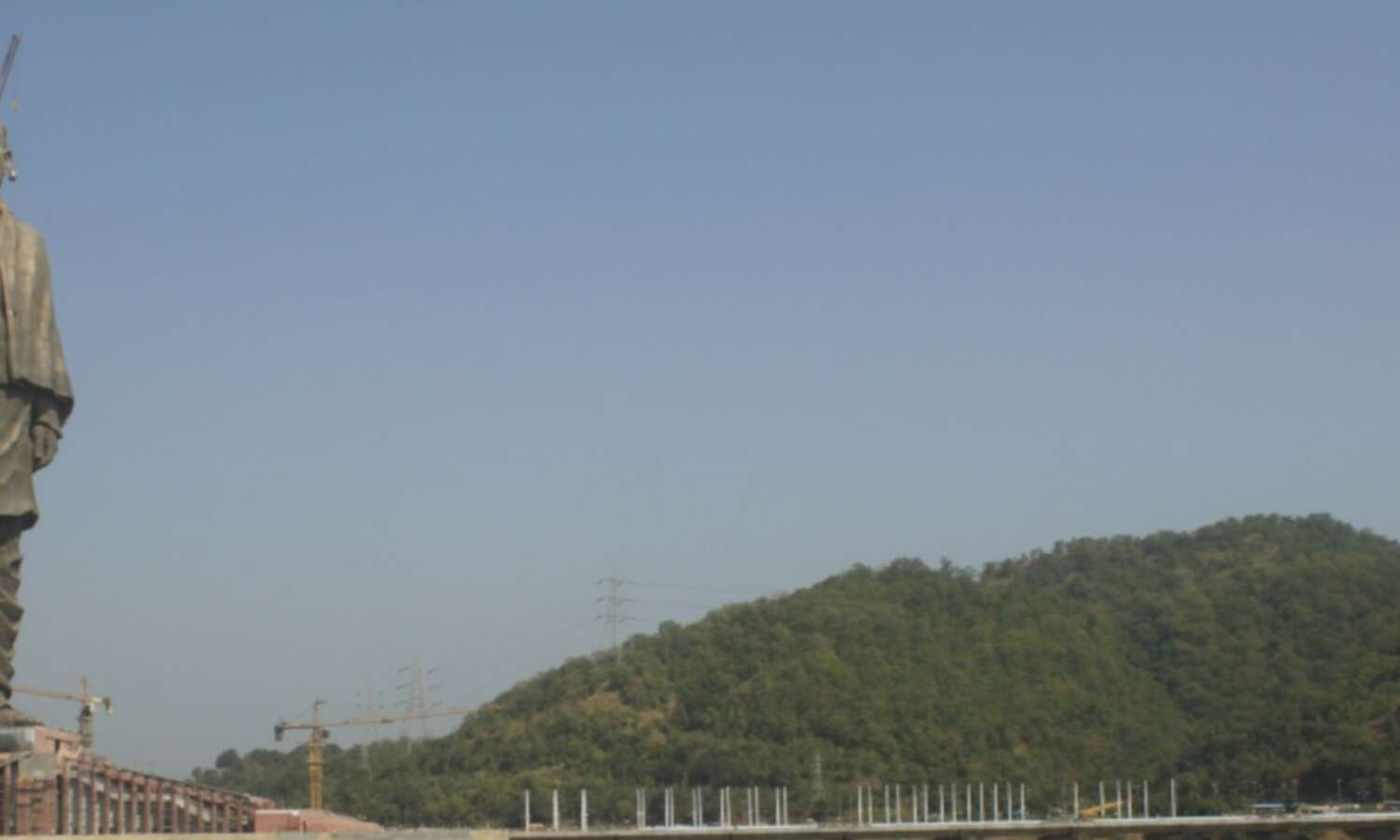Statue Of Unity: The World’s Tallest But Here’s What It Could Have Paid For

Mumbai: The Statue of Unity, built at an estimated cost of Rs 2,989 crore, could have instead funded two new Indian Institute of Technology (IIT) campuses, five Indian Institute of Management (IIM) campuses and six Indian Space Research Organisation (ISRO) missions to Mars.
The statue’s construction cost is more than double the estimated amount for proposals submitted to the central government by the Gujarat government to include in Pradhanmantri Krishi Sinchai Yojana (Prime Ministers Agriculture-Irrigation Scheme). The construction cost could have been used to irrigate 40,192 hectares of land, cover repair, renovation & restoration of 162 minor irrigation schemes and the construction of 425 small check-dams.
The Statue of Unity--representing the symbolic unification of India post-Independence--will be unveiled by Prime Minister Narendra Modi on October 31, 2018, as tribute to Sardar Vallabhbhai Patel on his 143rd birth anniversary. The statue is now the world’s tallest at 182 metres (597 feet) or nearly 100 times taller than someone 6 feet tall.
Sardar Patel -- independent India’s first deputy prime minister and home minister--was popularly known as the ‘Iron Man of India’ for his role in bringing about the merger of the princely states post-independence.
Resentment among farmers and locals
Thousands of tribals and farmers in Gujarat are planning a mass protest against the unveiling of the statue. They are unhappy with the cost of the project and with the lack of adequate rehabilitation efforts and water shortages in the catchment area where the statue is located.
The statue’s construction has affected 75,000 tribals across 72 villages in Gujarat’s Narmada district, NDTV reported on October 20, 2018. Of these villages, 32 have been most affected.
In 19 villages, rehabilitation has allegedly not been complete while compensation has been paid but further commitments like land and jobs have not been fulfilled in 13 villages.
Farmers have also threatened to drown themselves in the Narmada river as protest during the statue’s unveiling event, The Indian Express reported on October 29, 2018.
Resentment has also been building among more than 1,500 farmers in four districts—Chhota Udepur, Panchmahals, Vadodara and Narmada— who had sold 262,000 tonne sugarcane to the Sardar Sugar Mill in Sankheda, which was shut down due to financial mismanagement by board members. They are still waiting for their dues amounting to Rs 12 crore.
“At a time when Gujarat is facing a water crisis due to lower availability in the Narmada dam, I think the statue project could have been postponed by a year,” according to Ghanshyam Shah, a political expert based in Gujarat Mint reported on October 30, 2018.
Vijendra Tadvi, a farmer in Gujarat has been finding it difficult to irrigate his three acre farm, the BBC reported on October 28, 2018. "Instead of spending money on a giant statue, the government should have used it for farmers in the district," he said.
Here’s what Rs 2,989 crore spent on the statue is worth:
- Over eight times the amount (Rs 365 crore) allotted to Gujarat by the central government in 2017-18 under the Rashtriya Krishi Vikas Yojana (National Agriculture Development Scheme) as well as nearly five times the amount (Rs 602 crore) approved by the state government for 56 new schemes and 32 continuous projects under the scheme.
- More than double the estimated cost (Rs 1,090 crore) of two water pipeline projects. Firstly, a project based on the Kadana reservoir that will irrigate 10,000 hectare in Dahod and Mahisagar districts. Second, the Dinod-Boridra lift irrigation project which will provide irrigation to 1,800 hectare within Surat district.
- More than double the estimated amount (Rs 1,114 crore) for proposals submitted to the central government by the Gujarat government to include in Pradhanmantri Krishi Sinchai Yojana (Prime Ministers Agriculture Irrigation Scheme). The projects will irrigate 40,192 hectares of land, cover the repair, renovation & restoration of 162 minor irrigation schemes and the construction of 425 small check-dams.
The statue construction cost could build:
- Two new IIT campuses (considering one IIT campus costs Rs 1,167 crore).
- Two AIIMS campuses (considering one AIIMS cost Rs 1,103 crore).
- Five new permanent IIM campuses (considering one IIM campus costs Rs 539 crore).
- Five new solar power plants, each producing 75 megawatts of power (considering one power plant costs Rs 528 crore).
- Six Mars missions (considering one mission costs Rs 450 crore) and three Chandrayaan-2 (Moon) missions (considering one mission costs Rs 800 crore) by the Indian Space Research Organisation.
World’s tallest statue with state of art technology
The Statue of Unity is now 29 metres taller than the Spring Temple Buddha in China-- which at 153 metres was previously the tallest statue in the world--and twice the height of the Statue of Liberty (93 metres) in the United States.
The Veera Abhaya Anjaneya Hanuman Swami in Vijayawada, Andhra Pradesh, was previously the tallest statue (41 meters or 135 feet) in India.
“The Statue [Of Unity] will not only remind every individual of our great nation's freedom struggle but will also inspire the people of our country to inculcate Sardar Vallabhbhai Patel's visionary ideologies of unity, patriotism, inclusive growth and good governance,” the project portal reads under its objectives.
We welcome feedback. Please write to respond@indiaspend.org. We reserve the right to edit responses for language and grammar.


